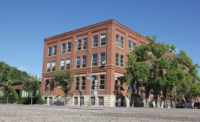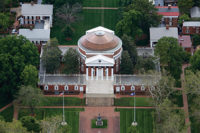
For 17 days beginning September 15, people from all over the world will be fixing their attention on Sydney, Australia, site of the XXVII Olympiad. There will be tons of media coverage, including pieces to help audiences get to know the host nation a little bit. To assist in that effort — specifically for the roofing industry — we offer this brief and insightful look at the early days of the Australian roofing experience.
The story of roofing on the houses of the first European settlers in Australia began with the use of materials found on or near the construction site. There was no other choice. This was a country far removed from the civilized world, and for a long time, manufactured materials had to be transported halfway around the planet in a sea voyage that could take as long as six months.
Bark Was Free for the Taking
Anyone building a house in the new village of Sydney shortly after it was settled in 1788 would have looked around the site and found — either right on hand or nearby — a supply of timber for cutting shingles and reeds for making thatch. Another material that was easy to come by and free for the taking was bark. The Aborigines of Australia had used bark to build their dwellings for untold thousands of years. The new arrivals soon realized that this was an excellent roofing material.The bark was harvested by cutting two grooves around the trunk of a tree — one close to the ground and the other 10 or 12 feet higher up the trunk. A vertical cut then joined the two grooves, and the bark was peeled off the trunk with wedges, working around the tree, and then laid flat to dry.
Bark roof construction required its own special techniques. The sheets of bark were placed on top of rafters and secured by thick saplings or branches, which were lashed in place with green-hide thongs. Nails could not be used with such a flexible and dynamic material. Generous overlaps were employed to compensate for shrinkage. Ridge capping of bark or metal completed a roof that was both weather-tight and naturally insulated. Some of these roofs survived more than a century.
Thatch was a common roofing material in many parts of Australia during the 18th and 19th centuries but there are no surviving examples of these early roofs. The craft of the thatcher is now extinct in Australia but the Sydney suburb of Rushcutter’s Bay is a reminder of the time when reeds and rushes were harvested there to roof the homes of early settlers.
Along with reeds, thatching materials included native grasses, rye straw, wheat, barley, oats and the native grass tree. Thatch was cheap and durable. Many people preferred it because its insulating qualities ensured a stable and comfortable internal temperature throughout the year.
In the dry northern inland regions of Western Australia, Queensland and parts of the Northern Territory, miners and stockmen constructed roofs from boughs and sticks. The fact that these structures could not hope of keeping out the rain was of no consequence. It almost never rained in those places; all the roof had to do was keep the sun out.

Wood Shingles
Shingles were by far the most important roofing material used in Australia during most of the 19th century. They were cut from a variety of bush timbers, including various species of eucalypt, casuarina and stringybark. The nomadic tribesmen who made their living from splitting shingles could cut about 700 18-inch shingles in a day. That was enough to install about 100 square feet of roofing. An experienced shingler could lay about 250-300 square feet of shingles in a day. Shingles quickly weathered to a pleasant silvery-gray finish and lasted for at least 10 years.
Milled timber boards also were used as a roofing material in some parts of Australia. Most of this usage occurred on the island of Tasmania, where several species of timber ideal for this purpose were available. The boards were laid in an overlapping system and formed a very dry roof.
Metal Systems
Spurred by construction of the large buildings of the industrial revolution (e.g., railway stations, factories and gasworks), efforts to produce commercially viable sheet metal roofing were underway. In the 1840s, the firm of Morewood and Rogers devised a system of flat tiles of zinc-coated iron with a rolled edge. Their patented roofing still is keeping the rain out of many early Australian buildings. In description at least, this form of roofing resembles the standing-seam metal roofing of many 19th century American buildings. The tiles were laid together so that the edge rolls overlapped, producing a waterproof seal.The use of metal roofing in Australia increased when British manufacturers realized that iron rolled into a series of regular corrugations was stronger, weight for weight, than flat iron sheets. This offered considerable savings in the quantity of metal required, and in the framing of the roofs.
Solving the problem of corrosion was the arrival of galvanized corrugated iron. It made its way to Australia around 1850 and rapidly became the most widely used roofing material. It was easily and swiftly applied (even by unskilled labor), light, compact, inexpensive, fireproof and immune from insect attack. Enough iron to cover the roof of a cottage fitted easily onto a dray or cart, making a load that was light enough to be dragged over bumpy roads to almost any bush building site.
Roofing iron used in Australia during the 19th century carried the names of British firms that became familiar to generations of Australians who saw the brand names on the undersides of their verandah roofs: Gospel Oak, Phoenix, Lysaght and others. Australian manufacturing of corrugated galvanized steel roofing began at the John Lysaght Works at Newcastle, New South Wales, on April 4, 1921.
The terms “corrugated iron” and “galvanized iron” became misnomers after about 1915 when steel began to replace iron in the manufacturing process. The change went unnoticed by the general public, which continued to refer to “corrugated iron” and “galvanized iron.” Today, however, the increasing use of Zincalume, an alloy of zinc and aluminum, to coat the corrugated steel roofing means the old terms are fading.
Canvas Roofs
The use of iron curved into graceful shapes to form the roof of a verandah or porch was illustrated in J.C. Loudon’s “Encyclopedia of Cottage, Farm and Villa Architecture,” published in London in 1833. Loudon said that such roofs could be supported by iron glazing bars, formed into a concave shape to lend an attractive appearance to the roof, and covered with “tarpauling well painted.” A concave surface, he figured, reflected more light, and was “more varied to the eye.”Throughout Australia, architects, builders and their clients adopted these ideas with enthusiasm. By the late 1840s, a number of Sydney buildings had concave verandah roofs with a lined or striped appearance. About 10 years later, the corrugated galvanized iron gradually replaced painted canvas, tinned iron, zinc or copper on the verandah roofs of Australia.
These roofs frequently were painted in stripes of alternate light and dark colors, deep red and buff being common choices. The practice derives from the long tradition of decorating canvas tents with stripes of contrasting color.
Slate and Tile
Roofing slate was imported from Wales and the United States, and was produced in South Australia and New South Wales. A variety of subtle colors was available, including blue, purple, green and gray. Decorative patterns were produced by using slates of different colors, or slates with curved or pointed ends. Slates were available in at least eight sizes, each known by a traditional name, of which the most popular were those known as Viscountess, Countess and Duchess.
The terracotta roofing tiles that eventually became so much a part of the Australian suburban environment were first imported from France in 1892. They were immediately successful, and by 1897, it was said that “no modern villa residence is complete without them.” Commonly known in Australia as Marseilles tiles, they were produced by nine tileries near that Mediterranean port, and by one Italian firm. The Wunderlich Co., the principal importer, brought 75 million of these tiles into Australia between 1892 and 1914; that’s enough to roof 40,000 Australian homes — many of them still keeping the weather out.





